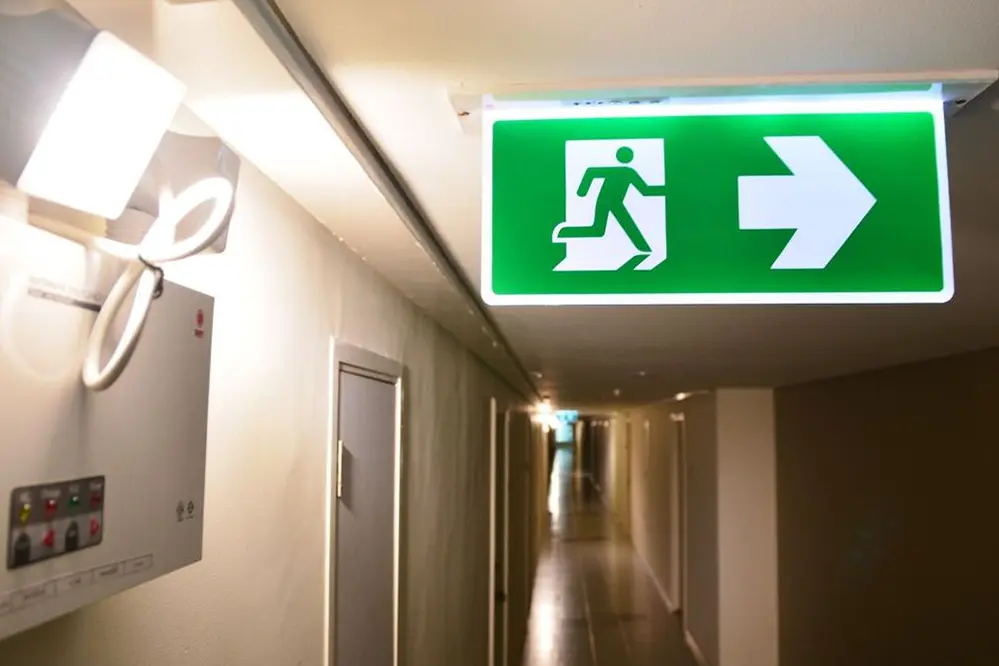In the midst of a bustling city, a sudden power outage plunged an entire neighborhood into darkness. Amidst the chaos, the only guiding light came from strategically placed emergency lighting. This scenario underscores the critical role that emergency lighting plays in ensuring safety and security during unforeseen events. According to the National Fire Protection Association, proper emergency lighting can reduce evacuation times by up to 50%, highlighting its importance in life-threatening situations.
Emergency lighting is not just a regulatory requirement; it is a vital component of any safety plan. With the increasing frequency of natural disasters and power outages, understanding the nuances of emergency lighting systems has never been more crucial. Surprisingly, a study revealed that nearly 30% of buildings fail to meet emergency lighting standards, posing significant risks to occupants. This statistic underscores the need for comprehensive knowledge and implementation of effective emergency lighting solutions.
As you embark on this journey through “The Complete Guide to Emergency Lighting,” prepare to uncover essential insights, practical tips, and innovative solutions that will empower you to enhance safety and compliance in any setting. Whether you’re a facility manager, a business owner, or simply someone interested in safety, this guide promises to illuminate the path to a more secure environment.
Understanding Emergency Lighting
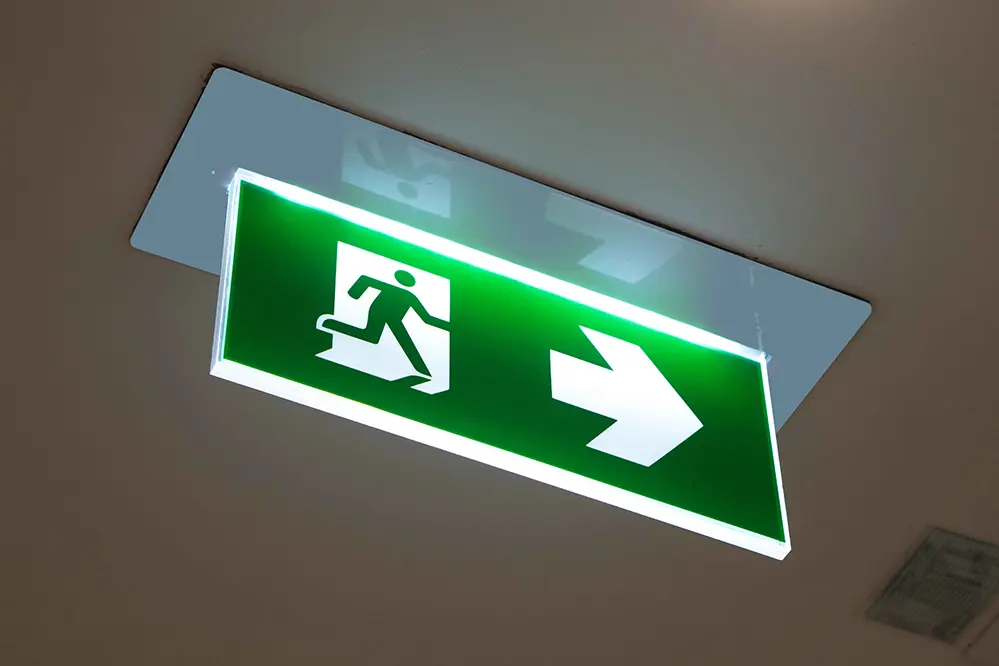
Emergency lighting is crucial for safety.
Its primary function is to provide illumination during power outages. This ensures that buildings remain navigable, reducing the risk of accidents and facilitating efficient evacuations. Moreover, this field has seen remarkable innovation and growth, with advancements in technology continuously enhancing these lighting systems’ effectiveness.
Fundamentals of emergency lighting systems are straightforward.
These systems typically comprise two components – exit signs and emergency lights. They are often integrated with self-diagnostic features to ensure their readiness at all times.
Such technological advancements highlight the prodigious evolution of modern safety measures, which not only comply with regulations, but actively innovate to provide comprehensive protection. By harnessing cutting-edge technology in emergency lighting, we are propelled towards a future punctuated by reliability and resilience, illuminating every shadowed corner of uncertainty.
Types of Emergency Lighting Systems
Emergency lighting systems, with their versatile designs, play a vital role in maintaining safety and order during unexpected outages.
Broadly speaking, these systems can be categorized into three primary types: maintained, non-maintained, and combined systems. Maintained systems provide continuous illumination, ensuring light is available at all times and during emergencies. Non-maintained systems activate only when the main power fails, offering a cost-effective solution without compromising safety. Combined systems integrate features from both, providing the versatility needed for diverse environments.
Additionally, there exists a spectrum of specialized solutions tailored to specific needs. For instance, central battery systems are employed in large complexes where individual backup units might be impractical, effectively centralizing the power supply to illuminate multiple areas concurrently.
In choosing the ideal emergency lighting system, understanding the unique requirements of different spaces is paramount. Whether safeguarding a commercial skyscraper, a bustling hospital, or a cozy residence, each system type offers distinct advantages that can be strategically leveraged. Embracing these innovative solutions empowers us to light the pathway to safety with unwavering assurance, transforming challenges into opportunities for brilliance.
Key Components of Emergency Lighting
Emergency lighting systems consist of several key components that ensure operational efficiency. These include batteries, luminaires, and control equipment, each playing a vital role.
Batteries store power necessary for emergency situations.
Luminaires provide the actual lighting required during outages, illuminating pathways and exits for safe egress. Control equipment, on the other hand, manages the operation and status of the system, maintaining readiness 24/7.
These pivotal elements synergize to create not just a mere backup, but a dependable beacon of safety in times of need, guiding individuals toward security with unyielding reliability. By understanding and implementing these components, we not only adhere to safety regulations but also foster an environment where resilience meets innovation. Therefore, investing in “emergency lighting the definitive guide” empowers organizations to adopt forward-thinking strategies for comprehensive safety solutions.
Regulations and Standards
In the realm of emergency lighting, adherence to stringent regulations and standards ensures utmost safety and reliability. These rules, such as those outlined by the NFPA, OSHA, and local jurisdictions, act as guardians to uphold rigorous standards of care and protection.
These regulations provide the foundation for designing systems that ensure safety, guide installation processes, and bolster overall dependability.
National Codes and Guidelines
Navigating the labyrinth of emergency lighting codes requires a keen understanding of key national standards.
The NFPA 101 Life Safety Code sets criteria for the location and design of emergency lighting systems.
These codes are a testament to the significance of well-planned emergency lighting systems, meticulously designed to enhance safety in crucial environments. They serve as benchmarks that facilitate consistency and promote innovative solutions that enhance overall security.
Embracing compliance not only assures the safeguarding of lives and properties but also signifies a commitment to excellence in safety standards. National guidelines keep safety at the forefront while encouraging advancements in lighting technology for emergency scenarios.
Importance of Compliance
Compliance with emergency lighting regulations is paramount; it ensures the safety and security of occupants during emergencies. Non-compliance could lead to catastrophic consequences, including significant injury or loss of life.
In recent years, the importance of adherence was dramatically underscored after several incidents revealed the disastrous effects of neglecting emergency lighting standards. These incidents illuminated the necessity for diligent compliance to extinguish risks and enhance safety measures.
Thus, it’s not merely about following rules. Compliance elevates the integrity of the entire emergency response system. When organizations prioritize this, they express a proactive dedication to the well-being of people and structures alike, ensuring resilience in the face of unforeseen events.
Furthermore, understanding and executing compliance requirements can save organizations from devastating financial repercussions. It helps avoid hefty fines, costly litigation, and reputational damage that may arise from inadequate safety measures, strengthening market credibility.
By constantly evaluating and updating compliance protocols, businesses foster an environment of continuous improvement and trust, ultimately creating a safer, more reliable experience for everyone involved.
Designing an Effective System
Creating an effective emergency lighting system demands an intricate balance between regulatory adherence, technological innovation, and user-centric design. Harnessing a holistic understanding of the environment’s needs establishes a robust foundation.
Design optimally integrates the physical layout with the lighting technology to yield efficient utilization.
Central to an effective system is the judicious selection of exit signs and luminaries, considering both (aesthetic value and technological performance), and dependability.
Strategically, backup power sources are indispensable for guaranteeing continued functionality in unforeseen outages, enhancing overall system resilience.
Critical design factors involve strategically planning maintenance schedules, ensuring that components function seamlessly, while compliance with standards continuously sharpens system efficacy and reliability.
Ultimately, your aim is to create what’s known as seamless safety. An emergency lighting system should not only illuminate pathways but inspire confidence and assurance.
Installation Best Practices
Implementing emergency lighting systems requires precision, adherence to standards, and a keen understanding of the environment, which lays the groundwork for success.
Professionals should note certain installation considerations, fundamentally impacting both safety and effectiveness.
Engage with an experienced team to ensure each lighting mechanism meets stringent installation standards. This includes adhering to a framework of local regulations and electrical codes, considerate placement, testing, and the integration of backup systems.
An optimal installation meticulously factors in the unique aspects of each building, allowing for a synergy of maximum coverage and efficiency. This not only fortifies emergency response but demonstrates a commitment to safeguarding occupants. By aligning with a “best practices” ethos, installations are not just by-the-book, but industry-leading exemplars of assurance and protection.
Maintenance and Testing Procedures
Ensuring emergency lighting systems remain operationally effective necessitates regular, scheduled maintenance and testing as an integral component of routine safety management.
Periodic inspections and tests ensure batteries perform optimally under high-demand situations.
Industry standards recommend monthly checks to confirm emergency lighting functionality, followed by a more comprehensive inspection every year. These evaluations should include assessing the battery condition, illumination levels, and the proper operation of all components, leaving nothing to chance.
A well-structured maintenance plan is not merely a compliance requirement but serves as a proactive measure to enhance safety and reliability. By fostering a rigorous regimen of scheduled testing and diligent upkeep, facilities can ensure that their emergency lighting systems are always ready to guide occupants through unforeseen challenges. This vigilant approach transforms maintenance from a preventive necessity to an empowering beacon of safety.
Benefits of Regular Inspections
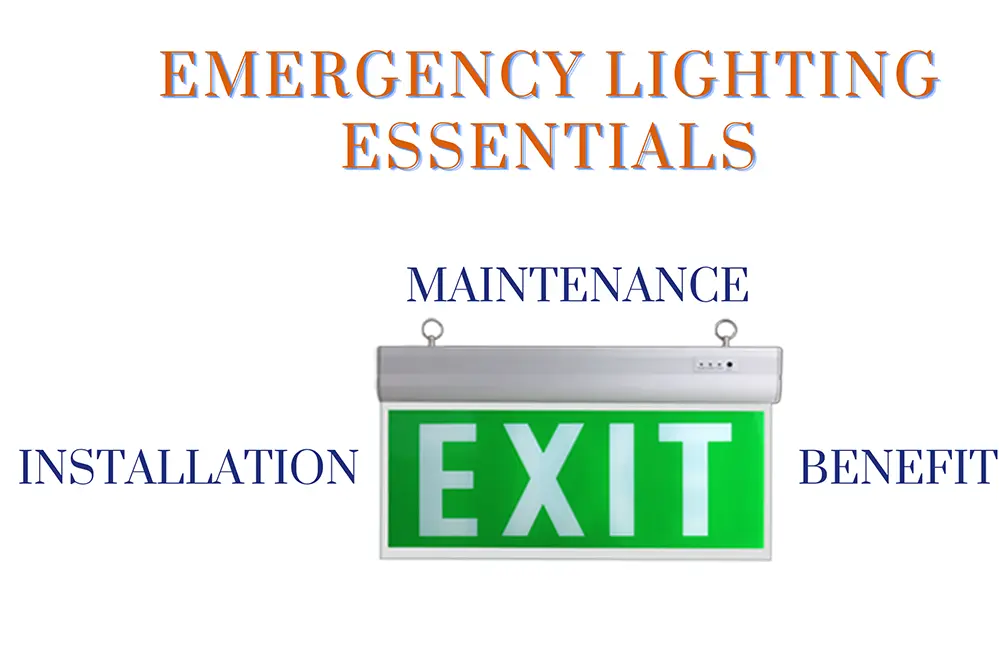
Regular inspections are the cornerstone of effective emergency lighting maintenance, ensuring optimal performance when it matters most.
In recent years, an industry survey revealed a direct correlation between consistent maintenance practices and the reduced likelihood of system failures. Facilities that prioritize routine checks not only extend the lifespan of their lighting systems but also significantly improve their overall safety readiness.
Thus, it’s no wonder that many building owners now regard routine inspections as a vital investment in their infrastructure’s resilience. By conducting thorough evaluations, they can identify potential issues before they escalade into costly repairs or unexpected outages, safeguarding both property and lives.
Moreover, the value of these inspections goes beyond immediate operational assurance, providing peace of mind that cannot be quantified. In dense commercial buildings, educational institutions, or healthcare facilities, this commitment translates into an unyielding trust that the lights will guide occupants safely to exits in an emergency.
Ultimately, regular inspections empower responsible facility management, shaping a proactive response to safety challenges.
Common Issues and Solutions
Emergency lighting systems, while reliable, can encounter common issues that affect their performance. Identifying and tackling these problems proactively is essential for maintaining optimal safety conditions.
Battery failure is the most common issue affecting emergency lighting systems. Regular testing is crucial to avoid unexpected malfunctions.
Over time, batteries degrade and must be replaced to ensure the system’s reliability during power outages. Schedule replacements according to manufacturer recommendations.
Charging circuit problems can impair a system’s capability to maintain battery power. Periodic inspections of these circuits prevent failures during emergencies.
Address connection issues by checking for loose or corroded wires, ensuring a steady electrical path. Consistent maintenance safeguards systems from unexpected breakdowns.
Finally, keep an eye on light bulbs’ lifespan to prevent sudden darkness. Properly timed replacements can ensure continuous luminosity during critical moments.
Innovations in Emergency Lighting
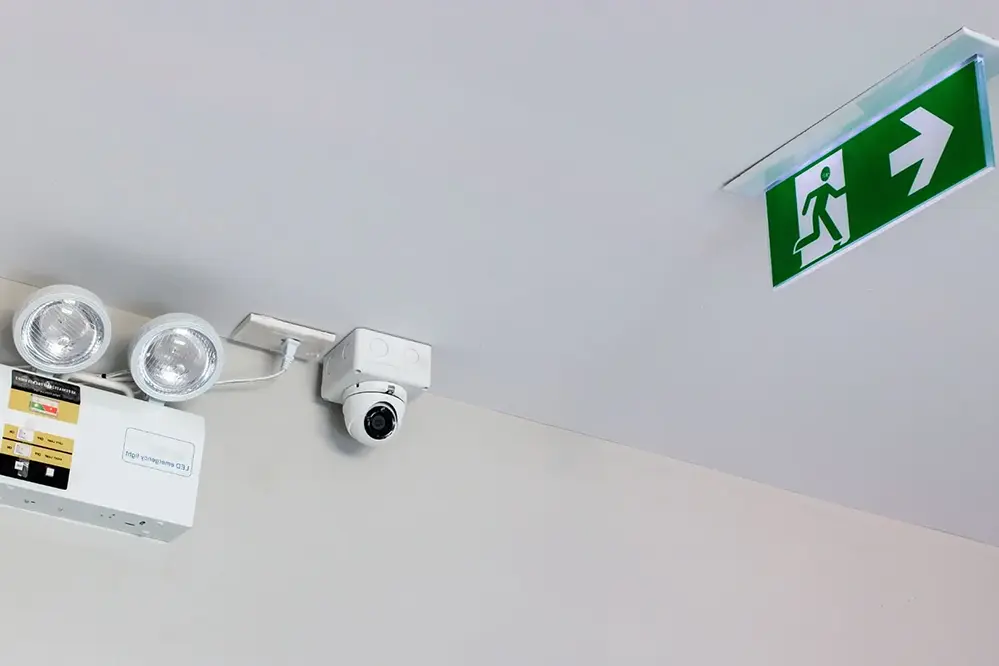
In recent years, emergency lighting has embraced cutting-edge technologies that enhance safety and efficiency during critical moments. What does this mean for the future of emergency preparedness?
In recent years, advanced innovations, like smarter lighting solutions with sensors, have transformed how emergency lighting operates. These innovations not only optimize energy use but also improve reliability, underlining their impact on safer environments.
Now, it’s not just about lights coming on; technology’s evolution provides a spectrum of new features such as adaptive lighting that responds dynamically to real-time conditions, offering unprecedented advantages and an enhanced safety net.
Harnessing the power of the Internet of Things (IoT), systems are now capable of smart diagnostics. This means they can self-regulate, communicate maintenance needs, and adjust operations autonomously, ensuring optimal functionality.
These innovations are advancing emergency lighting toward a future where reliability is taken for granted, bolstered by intelligence and interconnectivity for superior safety.
Choosing the Right System for Your Needs
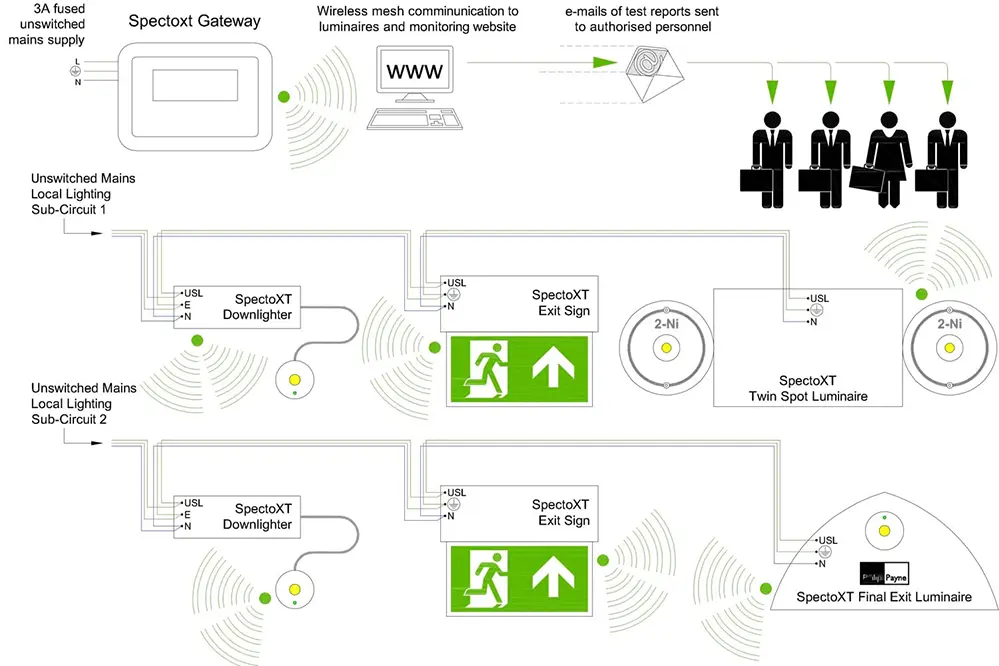
Selecting the ideal emergency lighting system becomes paramount when prioritizing safety, efficiency, and compliance with industry standards. Key to this choice is ensuring a solution tailored to your unique environment.
Consider your facility’s specific needs and possible emergency scenarios. Certain environments require more robust solutions.
Evaluate, whether factors such as building size and location, or specific hazards (hazardous areas certifications), are significant.
Different systems vary in features, providing capabilities for monitoring and controlling light levels, emergency event simulation.
Many offer options to seamlessly integrate with existing infrastructure, providing ease of control while ensuring compliance with safety regulations. By choosing a system that aligns with current standards, and anticipates future regulatory changes, you safeguard your investment and enhance operational resilience.
Ultimately, the goal is to select a system that’s not only effective today. Advanced solutions empower you with proactive features, ensuring your emergency lighting system remains efficient.
FAQs
What is the NEC code for emergency lighting?
The National Electrical Code (NEC) delineates specific requirements for emergency lighting to ensure safety and compliance. These guidelines are encapsulated primarily within the NEC Article 700, dedicated to emergency systems. Article 700 systematically addresses various facets such as installation, performance, maintenance, and testing of emergency lighting systems, ensuring that they function effectively during an outage.
Within this framework, the NEC mandates illumination levels must be sufficient for egress, requiring emergency lights to activate automatically should the primary power source fail. The code assures this transition happens seamlessly, thereby safeguarding occupants in emergency situations.
The NEC specifies the operational duration of emergency lighting, which typically must be at least 90 minutes. This duration supports safe evacuation and aids in maintaining order amidst potential panic.
Further, Article 700 elaborates on the infrastructure supporting emergency lighting, including power source specifications and circuit requirements. Backup power provisions, such as battery packs or generator systems, are outlined, ensuring reliability in critical moments.
This comprehensive code also requires regular testing and maintenance of emergency systems. Such measures are vital to certify systems remain in optimal condition, prepared to deliver immediate service when those critical first moments demand clarity and direction.
Importantly, NEC compliance is not merely about meeting regulatory requirements but ensuring life safety through deliberate, proactive planning. By following these codes, stakeholders demonstrate a commitment to excellence in safety standards, guaranteeing peace of mind in navigating unforeseen challenges.
Is emergency lighting 1 hour or 3 hours?
The duration for which emergency lighting systems are designed to operate often revolves around either a one-hour or three-hour capacity. This variation typically depends on the specific requirements dictated by building usage and local regulations. The right choice ensures safety and compliance.
Commercial buildings, for instance, might prioritizing a longer duration to accommodate evacuation needs. This is particularly crucial in high-occupancy structures.
The three-hour duration assures ample time for occupants to safely navigate to exits. Additionally, it provides a buffer window for any unexpected delays in evacuation.
Conversely, residential settings or smaller structures might find a one-hour system satisfactorily meets their safety goals. This allows for an efficient yet secure evacuation.
Regulatory standards usually guide the determination of the appropriate duration. Consulting an expert can help align your emergency lighting system with both jurisdictional requirements and specific building functions.
In conclusion, the determination between one or three hours hinges on safety requirements, tailored to best serve the building’s design and function. Making this informed choice enhances both safety and compliance.
What are the basics of emergency lighting?
In the realm of modern safety protocols, emergency lighting serves as a beacon of hope, guiding individuals to safety during power outages or emergencies. It epitomizes the essential fusion of functionality and resiliency, ensuring visibility in crisis situations.
At its core, emergency lighting systems are designed to activate automatically. When the mains power is interrupted, these systems illuminate to safely guide occupants.
There are two primary types of emergency lighting: maintained and non-maintained systems. Maintained lights operate continuously, while non-maintained systems activate only during power failures.
Technological advancements have vastly expanded its capabilities, incorporating LED technology for efficiency. LEDs offer extended lifespan, energy conservation, and lower maintenance, revolutionizing the emergency lighting landscape.
It’s crucial for the implementation of emergency lighting to comply with local regulations and standards. Proper placement and illumination levels ensure thorough coverage and maximum safety for all occupants.
Ultimately, the essence of emergency lighting lies in its promise of security. As technology evolves, it continues to become more sophisticated, providing reassurance during unexpected power outages.
Who is the responsible person in BS 5266-1?
In the context of BS 5266-1, the responsible person plays a crucial role in ensuring the effectiveness and compliance of emergency lighting systems within a building.
Enacted to uphold the safety and well-being of building occupants, BS 5266-1 necessitates the designation of a responsible individual. This person holds accountability for maintaining, testing, and certifying that emergency lighting meets established safety standards.
Tasked with the organizational oversight of lighting systems, they ensure that emergency exits and pathways are well-illuminated during power failures. Their duties extend to coordinating periodic testing routines and inspecting the adequacy of existing installations.
Moreover, this responsible individual must possess relevant technical knowledge and remain updated with regulatory amendments to guarantee ongoing compliance. By steadfastly fulfilling these responsibilities, they not only adhere to regulations but contribute significantly to enhancing public safety.
Ultimately, their unwavering commitment ensures that emergency lighting systems provide effective illumination when it is needed most.
When is emergency lighting required?
In any environment where safety is paramount, the presence of emergency lighting illuminates the path to security during unexpected situations. This form of lighting becomes essential, particularly in commercial buildings, public spaces, and residential environments with complex layouts. Government regulations and safety codes typically dictate the conditions under which these lighting systems must be installed and maintained. For example, the National Fire Protection Association (NFPA) and the Occupational Safety and Health Administration (OSHA) provide guidelines that ensure effective egress during power failures or emergencies.
Particularly, areas that can experience high occupancy or limited natural light should prioritize the incorporation of emergency lighting. The primary purpose is to facilitate the swift and safe evacuation of individuals in areas such as stairwells, hallways, and exits. Furthermore, venues hosting large gatherings, such as theaters and arenas, must comply with stringent regulations to prevent panic and chaos during unforeseen power outages or fire emergencies.
Beyond these requirements, emergency lighting plays a critical role in enhancing the safety of industrial and manufacturing settings, where the complex machinery and equipment necessitate clear visibility, even in emergencies. Here, reliable lighting systems help prevent accidents, safeguard lives, and protect valuable assets by ensuring uninterrupted visibility at crucial times.
Reflecting on disaster scenarios, it’s clear that strategically planned emergency lighting provides a lifeline—and a light line—during power failures. By empowering occupants with visibility and guidance, these systems not only fulfill regulatory obligations but also embody a commitment to the safety and reassurance of the public, reinforcing resilience against the unpredictable forces of nature and man-made challenges.
Conclusion
Emergency lighting stands as a crucial element of safety, offering steadfast guidance during unpredictable situations. This comprehensive guide aids in selecting a system that not only complies with standards but also aligns with the unique needs of your organization. By understanding industry trends, you can enhance the safety and well-being of all occupants, ensuring your environment is prepared to handle uncertainties.
Armed with this knowledge, you now possess a thorough understanding of what constitutes an effective emergency lighting strategy. The steps you take today lay the groundwork for a secure and illuminated tomorrow. By integrating future-ready solutions, you transcend simple compliance, creating a proactive approach that fortifies safety and inspires confidence.
Incorporating cutting-edge technologies designed to anticipate and adapt to evolving challenges allows you to navigate emergencies with assurance. This strategy not only strengthens safety measures but also reinforces your commitment to building resilient, intelligent environments. Such environments inspire trust and provide an invaluable asset, ensuring you are well-prepared for any emergency scenario.
